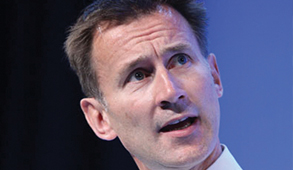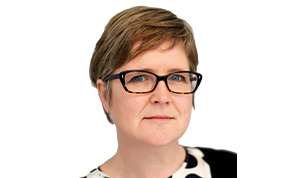Base workforce plans on demand and capacity, MPs say
 In a report on workforce in health and social care, the committee said staff planning has been based on the availability of funds and not likely future need. But there was no accurate, publicly available forecast of demand and the capacity required in both sectors over the next five to 10 years.
In a report on workforce in health and social care, the committee said staff planning has been based on the availability of funds and not likely future need. But there was no accurate, publicly available forecast of demand and the capacity required in both sectors over the next five to 10 years.
Workforce burnout and resilience in the NHS and social care said that without a high level of detail on health and care workforce needs staff shortages would remain. The resulting shortages would adversely affect patients, clients and staff.
The committee called on Health Education England to publish an annual evaluation of whether enough staff are being trained. This assessment should be transparent and independently audited, and cover health and social care over the next five, 10 and 20 years.
Forecasts should take into account the labour market as a whole, and make clear the opportunity cost of failing to train, employ and retain sufficient numbers of staff.
Evidence submitted to the inquiry showed a ‘high degree of consensus’ that the NHS and social care workforces had been overstretched for some time. The King’s Fund, for example, told the MPs that workforce planning was ‘incoherent’ and education funding was inadequate.
However, while funding should not shape the workforce planning process, it will still be important. The committee praised the NHS people plan ambitions to address failings in culture, and address the needs and wellbeing of staff. However, it continued: ‘Its delivery will depend on the level of resourcing allocated to these priorities. Without adequate funding the laudable aspirations of the people plan will not become reality.’
It recommended that the Department of Health and Social Care publish regular, costed updates, and delivery timelines for all people plan proposals. A workforce plan for social care was needed urgently, and should be included in the government’s proposed social care reforms, which are due to be unveiled later this year.
‘The adult social care workforce has stepped up to the plate during the pandemic. They deserve the same care and attention that the People Plan pledges to NHS colleagues,’ the report added.
Committee chair Jeremy Hunt (pictured) said workforce burnout presented ‘an extraordinarily dangerous risk’ to the future functioning of health and care.
‘An absence of proper, detailed workforce planning has contributed to this, and was exposed by the pandemic with its many demands on staff. However, staff shortages existed long before Covid-19.
‘Staff face unacceptable pressure with chronic excessive workload identified as a key driver of workforce burnout. It will simply not be possible to address the backlog caused by the pandemic unless these issues are addressed.’
He added: ‘Achieving a long-term solution demands a complete overhaul of workforce planning. Those plans should be guided by the need to ensure that the long-term supply of doctors, nurses and other clinicians is not constrained by short-term deficiencies in the number trained. Failure to address this will lead to not just more burnout but more expenditure on locum doctors and agency nurses.’
NHS Providers backed the report. Deputy chief executive Saffron Cordery (pictured) said: ‘For some time, we have been calling on the government to embrace a longer-term approach to workforce planning, and to work with the NHS to deliver a fully costed and funded workforce strategy. This report underlines the importance and urgency of taking this approach, for the good of staff and patients.
‘We’re also pleased by the recommendations around social care. The report rightly calls for the development of a social care people plan and much greater alignment between health and care workforce planning.’
She added that persistent staff shortages had normalised excessive workloads and stress. It was vital that the NHS did everything possible to protect staff and avoid the risk of increased retirements and departures.
Related content
The value masterclass shares examples of organisations and systems that have pursued a value-driven approach and the results they have achieved.
This webinar series offers colleagues of ICS organisations the opportunity to discuss common priorities, challenges, and successes within their field.